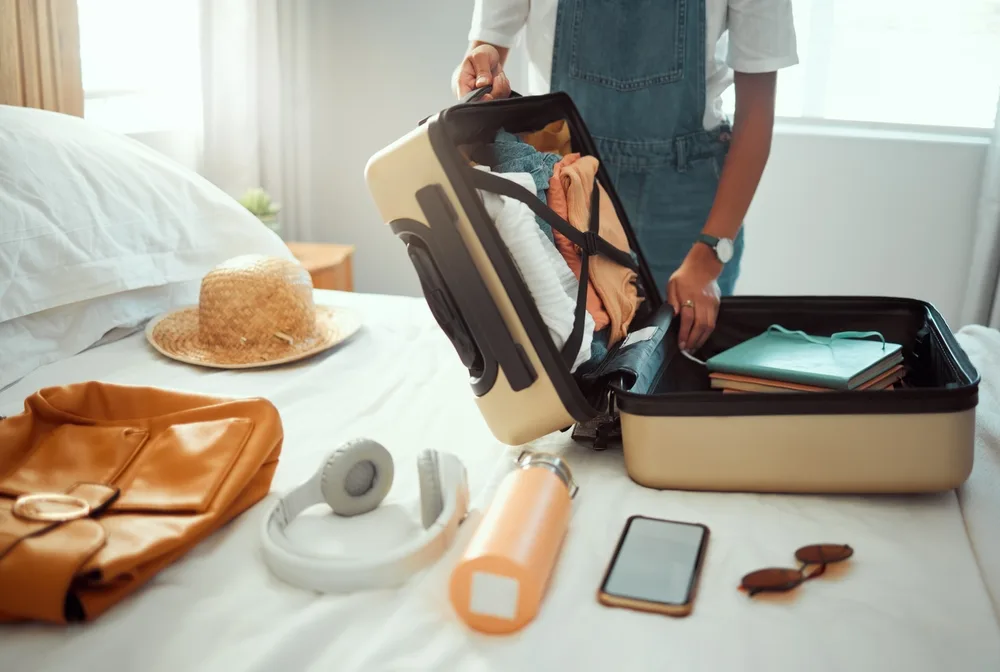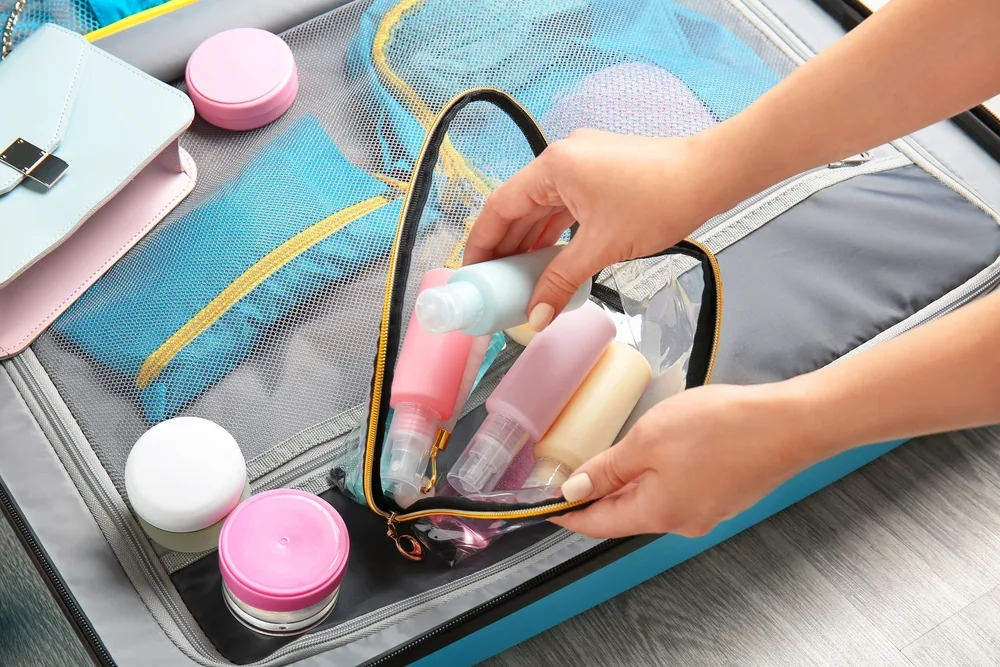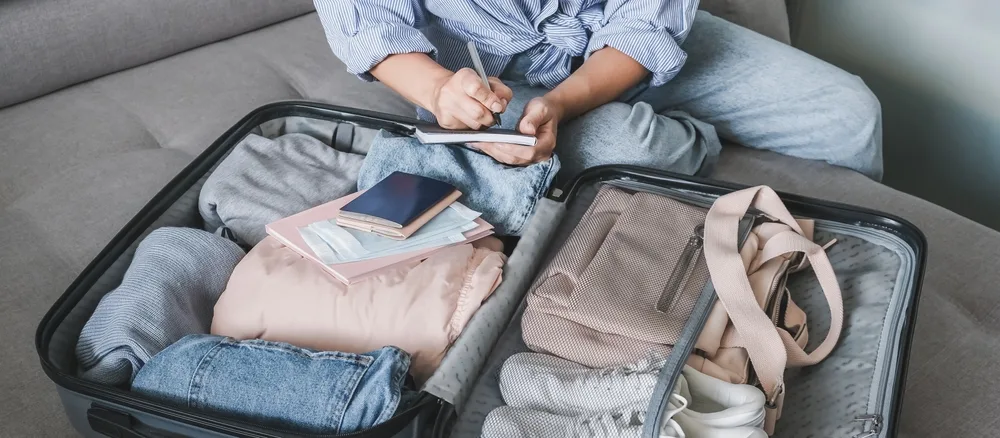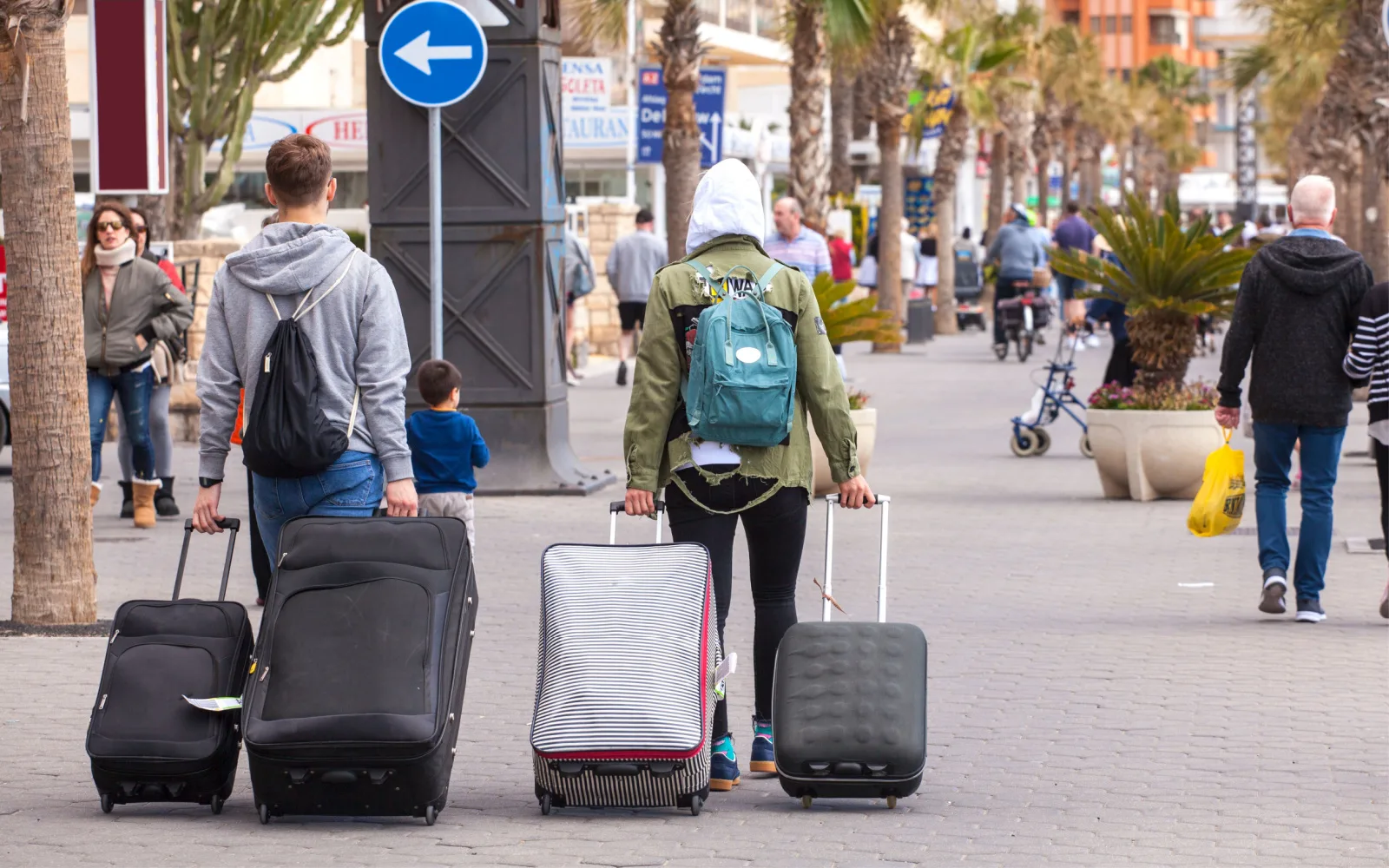Europe is known for its blend of class, charm, quaintness, and good vibes. From ancient days to modern times, it offers myth-steeped hillsides, haunted cities, and the world’s oldest restaurant: Restaurante Botín in Madrid.
It seems everyone from across the globe wants to go to Europe, and the numbers bear out this enthusiasm.
According to the European Travel Commission, “Europe’s tourism recovery is maintaining its momentum despite economic headwinds, reaching about 95% of 2019 levels of international tourist arrivals.”
Perhaps unsurprisingly to those of us stateside, “The US proves to be the strongest long-haul source market to Europe to date this year.”
We Americans love our Euro vacays, after all. There sure is a lot to choose from when it comes to Europe, too. From Sweden to Slovakia, Italy to Iceland, Holland to Hungary, there’s no limit to beautiful destinations on “the Continent.”
Whether you’re looking for ancient ruins, developed downtowns, wilderness hikes, or sunny beaches, Europe has them all.
Naturally, that makes packing more difficult. Depending on where you’re going and at what time of year, as well as what you want to do, the contents of your suitcase will vary quite a lot.
Don’t worry, though, we’re here to help. Today, we’ll take a look at what the climate is like across Europe, how to pack by season and activity, the main items to remember, and how to save money while prepping. So …
Allons y! Vamos! Lass uns gehen!
Let’s go.
The European Climate

Versta/Shutterstock
I know, I know, we say “the European climate” like there is any such thing. In truth, Europe is quite varied, seeing everything from stormy snow to arid deserts. It has coastal marshes, deep fens, white sand beaches, and primeval forests.
Most of it, however, is considered temperate. Such climates “are generally defined as environments with moderate rainfall spread across the year or portion of the year with sporadic drought, mild to warm summers and cool to cold winters.”
Naturally, there exists a great deal of variation among the 44 to 50 countries of Europe (depending on whom you believe [linking opportunity to “How Many Countries” post]).
Some places in Europe don’t fall into the definition of temperate. For instance, Scandinavia boasts everything from a cooler, moister marine climate in the south to subarctic and tundra in the north.
Spain has a Mediterranean climate in the south and inland it has a continental climate, characterized by cold winters and hot, dry summers. As such, it’s not possible to say “Pack XYZ for Europe and you’ll be fine!”
Rather, it’s important to understand the nuances of your location and the other factors of your trip, then plan accordingly. To that end, let’s take a look at some average temperatures and the smartest ways to pack by season.
Average Wintertime Temperatures in Europe
Winter temps vary widely across Europe’s 4.066 million miles, so there’s no “one size fits all” packing plan based on season.
For instance, did you know many parts of Greece see snow in December and January (and sometimes other months)? Or that Madeira’s winter temperatures hover in the high 60s on average?
Some years, cities in high northern climes such as Northern Sweden may see snow all summer long. The good news is, by knowing the average temperature of the area to which you’re headed, you can make a smarter plan and avoid surprises.
The following temps are listed in degrees Fahrenheit:
- Oslo, Norway: 32-34
- London, England: 48-49
- Nice, France: 54-56
- Palermo, Sicily: 59-61
- Dubrovnik, Croatia: 54-57
- Istanbul, Turkey: 48-51
As you can see, wintertime temperatures vary widely, from those in which you’ll enjoy skiing to those that are much warmer – sweater weather rather than coats and scarves.
Of course, if you have specific bucket list items for Europe – say, the Northern Lights in Scandinavia or a desert stay in Spain – then you’ll need to pack warmer clothes, as temperatures can easily drop below freezing.
Average Summertime Temperatures in Europe

PeopleImages.com – Yuri A/Shutterstock
- Oslo, Norway: 70-73
- London, England: 70-74
- Nice, France: 74-80
- Palermo, Sicily: 83-88
- Dubrovnik, Croatia: 81-86
- Istanbul, Turkey: 80-84
Summer is a bit less varied than winter in Europe. Yet you’ll still face higher temperatures in desert climates as well as the warmer Mediterranean countries.
Climate change isn’t helping, either, meaning that travelers need to be prepared to face unexpectedly hot conditions in southern travel destinations.
For instance, “The current hottest temperature recorded in Europe was 48.8C close to the town of Syracuse on the Italian island of Sicily in 2021.” Unfortunately, “The conditions forced the entire country to declare a state of emergency.
A heat dome of high pressure spanning the Mediterranean created a domino effect of extreme weather events.”
For this reason, it’s smart to check the weather a week or so before traveling and make any updates as needed. (Sicily might just call for those personal fan spray bottle things that you see at baseball games?)
Packing for Europe by Season
The first question is: when are you traveling? That has the highest impact on your choice of items:
Packing for Winter
Winter in most of Europe is chilly at a minimum. Even in Greece and Italy, you’ll want rain gear and a warm coat. In Scandinavian and alpine areas, you’ll want full head-to-toe snow gear. Remember hats, gloves, scarves, and woolen socks for any snow activities.
Packing for Summer
Most countries in Europe are warm and sunny in summer, including Scandinavia, the British Isles, and other northern countries. However, squalls are not uncommon in marine climates, such as England, so pack a light jacket if you’re headed there.
Packing for Spring and Fall
Spring and fall are typically temperate in Europe. You’ll see cooler temps, usually in the mid-60s or so. Depending on where you’re going, you may face rain (Northern and Western Europe) or hotter sun (Southern and Eastern Europe). Prepare by packing layers.
Packing for Europe by Persona

PeopleImages.com – Yuri A/Shutterstock
The second question is: what will you do in Europe? Let’s take a look at specific items you might need depending on your persona:
The Outdoorperson
The right gear matters here, from fishing equipment to a compass for backpackers.
The Beach Bum
Bring lots of sunblock (it’s expensive over there), extra flip-flops (thongs break), extra glasses (am I the only one who loses a pair a day?), and your own nice, big beach towel.
The Winter Warrior
Long underwear, wool socks, outerwear, and heavy boots are all a must!
The Sightseer/Foodie
Remember your camera, face wipes, blister treatments (2nd Skin works great), and any Instagram props on which you may rely. (It’s okay, you’re not alone.)
Packing Hacks to Minimize Your Load
Knowing what you do now, how can you get your packing down to a manageable state and save money while doing it? Here are a few tricks.
Pack Light
Okay, so packing light isn’t exactly a mind-blowing hack. Yet although many travelers know it’s a good strategy, they don’t know how to do it. This prevents them from saving on checked baggage fees – and saving their backs as well.
The trick to packing light is to understand that you don’t need more luggage for a longer trip. If you’re going to Europe, you probably plan to spend at least a week there, but if you’re going for three, you needn’t bring a larger suitcase.
Instead, plan for one large carry-on, one spacious backpack or bag, and one small purse or money belt for when you’re out and about.
Then research the laundry options where you’re going (hotel, local laundromat, or a family-run service) and make time in your schedule. The small added chore is much better than worrying about lost luggage or toting giant suitcases around Europe.
Read Next: Can You Bring Snacks on a Plane? Yes, But Rules Apply
Try Packing Cubes
Packing cubes might seem like a chichi extravagance, but they’re not. You know the stuffing thing you have to do with a suitcase before you can zip it up? Packing cubes make this much easier. (Love this post-consumer recycled set.)
They work well because you can categorize your items – shirts, shorts, jackets, underthings – easily, then know exactly where to find them. You also know exactly where to put them after laundering, and they fit easily into your suitcase. No stuffing needed.
Go for Neutrals
Neutrals are such a smart way to pack because they mix and match so well. If you bring a wardrobe full of beige, cognac, white, and black, then almost everything will look good with everything. That way, your outfits become mix-and-match rather than standalones, saving you major space.
Choose the Right Toiletry Bag
A toiletry bag is key. You’ll want something that can easily transfer from your backpack to your out-and-about bag, ideally with a smaller removable sac you can throw in a purse while wandering the streets.
There, you can keep face wipes, minimal makeup, lip balm, and sunscreen. You can leave the bigger toiletry bag in your hotel or vacation rental while you’re out, but don’t forget to put it in your backpack before you hop on the plane.
Packing for Europe: Beyond the Clothing

Pixel-Shot/Shutterstock
Clothes aren’t the only thing you’ll bring with you to Europe, of course. Here are a few more to remember.
Cosmetics, Toiletries, and Pharmaceuticals
Where possible, bring travel-sized bottles of shampoo, conditioner, lotion, cosmetics, and so on. Check the Transportation Security Administration for further information. I recommend bringing a day-of-the-week container for daily pills.
This is what I use while traveling, with a small baggie of extras, should I face a delayed flight or other unforeseen circumstances. Keep inhalers, EpiPens, and other emergency items in a separate case that you can throw into your out-and-about bag.
Read Next: Our Complete Guide to Carrying Liquids Onto a Plane
Devices and Chargers
It’s no fun to realize you’re stuck in a foreign country and can’t charge your phone! Sure, you can run to the nearest Apple or AT&T store to replace one, but depending on where you are, “near” might not be that near.
Instead, put these at the top of your packing list. In the week leading up to leaving, I recommend putting stickie notes near where you typically plug in your chargers to make sure you’ll unplug and pack them the night before you leave.
Daily Needs
Two of the best ways to save money while traveling in Europe – and everywhere else – is to avoid buying water bottles or snacks. I always pack a water bottle with a filter as well as reusable snack baggies to help me avoid spending on expensive individual services in airports and convenience stores.
Documents
Passports, tickets, insurance papers, IDs, permits or lift tickets, traveler’s checks (yep, some people still use them), and other important documents should all travel together.
When you’re not in the hotel, make sure they go in a safe or somewhere secret. While en route, they should stay in your backpack or personal item so you have easy access to them at all times.
Miscellaneous
Any miscellaneous items should go in their own packing cube. This is where you should keep pens and journals, bottle openers, lighters, and so on.
Frequently Asked Questions

Shyntartanya/Shutterstock
Here are a few frequently asked questions about packing for Europe.
How can I save money while packing?
The best ways to reduce baggage costs are to bring only a carryon and personal item, use packing cubes to organize and save space, pack as many clothes for a month as you would for a week, wear neutrals, and designate a spot for all your non-clothing items to minimize volume.
How do I know what to wear?
First, Google “climate of [country]” and see what it says. Then check average temperatures for the area to which you’re traveling. Plan a packing list accordingly, then check the weather the week before you leave and make any adjustments as necessary.
What do I need beyond clothes?
Beyond clothing, make sure to bring devices and chargers, documents, medicines and emergency items, and any specialty equipment you might use (camera lenses, etc.).
Are packing cubes worth it?
Yes, packing cubes are totally worth it! They help to organize your gear by category, so you never have to dig to find it. Plus, they make it much easier to fill your suitcase without having to sit on it to close it later.
How many pairs of shoes do I need?
I cannot stress this enough: you only need two pairs of shoes. Bring sturdy walking shoes and nicer city shoes if you’re going to a warm climate in summer. If traveling in winter, bring cute but warm walking shoes and a pair of boots for “real” outdoor activities.
Over to You — Book Your Europe Trip Today!
All right, packing expert, you’re all set. Take these tips with you to the Continent and make those amazing memories, all without spending unnecessary money on packing or throwing your back out.
Bon voyage!



